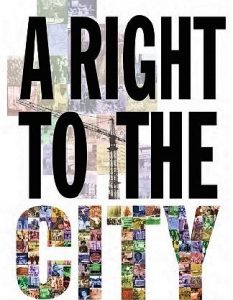 I am developing the critical skills of patience, persistence and perspective. One of the challenges of working on this project has been that it is not a fully virtual internship. Gaining digital access to the exhibit was not immediately feasible, but I was fortunate that the museum eventually was able to provide funds for me to travel to Washington D. C. to see the exhibit and to meet with museum staff. In the meantime, I spent time working through the unit guides I obtained from the Social Studies Coordinator at DCPS (District of Columbia Public Schools). In hindsight, not being able to see the exhibit until after I had worked through these materials was probably a blessing in disguise. Having this familiarity helped to focus my attention on the most obvious points of connection between A Right to the City and the opportunities at DCPS when I saw it for the first time.
I am developing the critical skills of patience, persistence and perspective. One of the challenges of working on this project has been that it is not a fully virtual internship. Gaining digital access to the exhibit was not immediately feasible, but I was fortunate that the museum eventually was able to provide funds for me to travel to Washington D. C. to see the exhibit and to meet with museum staff. In the meantime, I spent time working through the unit guides I obtained from the Social Studies Coordinator at DCPS (District of Columbia Public Schools). In hindsight, not being able to see the exhibit until after I had worked through these materials was probably a blessing in disguise. Having this familiarity helped to focus my attention on the most obvious points of connection between A Right to the City and the opportunities at DCPS when I saw it for the first time.
Dr. Samir Meghelli, the museum’s chief curator, who created A Right to the City, walked me through the exhibit. We connected on some themes that I see emerging especially in the realm of student activism which dovetails nicely into some of the DC guidelines about teaching civic engagement in the 21st century. He also gave me some work a previous intern had begun to create resource guides for teachers in DCPS and for charter schools as well. This will be valuable information for me as I begin to think about developing lessons.
Perhaps the most fruitful part of my trip was a planning meeting with Paul Perry(Assistant Director of Education), Samir Meghelli (Chief Curator), Alcione Amos (Curator) and Lisa Sasaki (Museum Director). Lisa was masterful in leading everyone in talking through all the options on the table about audience, resources, objectives, etc. in order to arrive at a viable plan to deliver a very specific tool for DC teachers. She modeled a skill that I will need to learn in order to be successful in working on a team in order to deliver meaningful projects. She listened to all the constituents and questioned their thinking and then moved the conversation forward. We went through that cycle several times until we arrived at a focused plan of attack. Having a workable plan with clear goals and a clear timeline is critical any successful project.
My audience is DCPS 12th grade social studies classes. My priorities are to develop a site visit plan for DCPS teachers in order to get them into the exhibit this spring. Next, I will develop a virtual visit experience that could be used as a pre-visit tool and serve as a virtual visit in the future. I will put this into place by mid-spring. Finally, I will build out a plan for lessons using the exhibit as a complement to concepts currently covered in DCPS classrooms. These lessons will be in place for the 2019-2020 school year.
I was also able to develop face to face relationships with museum staff and meet others with whom I will be working. Building relationships is an important skill in moving projects forward. I was able use outside relationships to network with DCPS, and I am continuing to develop relationships with others in the museum that will be valuable in maintaining momentum.